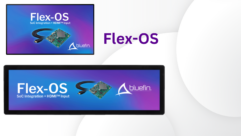
Distributed Versus Centralized Player Architecture in Digital Signage Deployments
Jan 3, 2014 4:01 PM,
By Dave Haar
Where did we put that player?

Let’s make a couple of assumptions concerning the customer that just came to you to design a dynamic messaging system for their organization. First of all, they think that they know what they want in terms of the number of screens that they want you to mount. They also have a pretty good idea on what type of content that they want to show on the different screens. They’ve also thought about how often they are going to need to update the content and why they want you to manage it for them. Now you are thinking, “Wow. This is going to be easy, hang a few screens, get a maintenance contract on the software and hardware in place, and off we go to the bank.”
Not so fast. There are several very important considerations you need to take into account as you propose your final design to your customers. One of these considerations, that we will talk about here and again at the Digital Signage Expo (DSE) in February, is, when do I put a player behind a screen and when do I locate it somewhere else.
Players at screens work in between 65 percent and 75 percent of your deployments. They are relatively easy to install, sometimes built into the screen itself. They can use existing network cabling infrastructure and usually use less hardware than other choices. They can take advantage of wireless connectivity in some environments and can be easily secured to prevent tampering and theft.
There are, however, some drawbacks to having a player located behind every screen. These challenges include price, especially when sending the same content to multiple screens. Players can be difficult to service or access during regular business hours and can be exposed to some pretty harsh environments, including the screen itself. You need to make sure you have made provisions for mounting the player in terms of OSHA and other regulatory requirements. If your player is integrated into the screen, it provides you with an easy install but also a single point of failure. These players also tend to be less robust and you need to insure they are capable of handling the creative needs of your customers in terms of the content you need them to play.
The alternative to locating players at screens is to use signal extension and distribution equipment to stream content from a distance to the screen. This can be done using analog or digital systems, and we discuss these choices, in depth, at our upcoming seminar at DSE. I have found, however, in my experience connecting players to screens, that there are three basic scenarios where placing a player away from the screen will save a significant amount of money and time in the installation and servicing of a digital signage network, over its three to five year life.
The first scenario is whenever your customer is sending the same content to multiple screens within an environment. Examples might be the checkout lines at a grocery store, multiple sides of a snack bar in a movie theater, multiple screens on a sales floor, or multiple projectors in an auditorium or sanctuary. The reason is that, in most cases, content management software companies charge by the player license. Players and their recurring licensing fees tend to be more expensive than distribution amplifiers and their corresponding receivers. You can typically use the same cabling as you would for the player being at the screen so there are usually no additional installation charges for cabling. The power requirements are the same. The other advantage to distribution of signals is that you are guaranteed to have the signal get to every screen at the same time. With individual players you need to concern yourself with clock speeds so that you aren’t faced with unsynchronized content and frying your audience’s brains as the images fly by on the screens.
The seconds scenario where placing players at locations other than behind the screens is whenever you are placing screens in environments where they are difficult to reach during business hours or reaching them would disrupt your customer’s core business. Examples of these scenarios might include shopping malls, where you can’t bring in forklifts or ladders during business hours, therefore incurring increased service and security costs. Other scenarios might be the checkout line at a grocery or quick service restaurant or the line at an amusement park. In these scenarios, servicing the screen during operating hours proves very difficult and tends to disrupt the flow of business.
The last scenario for placing players other than at the screens is when the screen is placed in what is considered a hostile environment. Examples of these might be the floor of a factory for posting production information or an outdoor menu board at a fast food restaurant. Railroad stations, bus stations, and subways are other examples of places where dirt, dust, heat, and cold can negatively affect the mean time between failures of your customer’s players, causing them to experience increased service costs over the life of their network.
While players at screens work perfectly in the majority of cases, placing them in safe, secure, accessible, and environmentally friendly locations in the scenarios described above will save you and your customer’s time and money over the life of their deployments. Want more information? Register for my session at DSE in Las Vegas next month.
Registration for the Hardware, Software & Connectivity Seminar Program, or any of DSE 2014 educational conference seminars, which are eligible for certification renewal credits, is available online at www.digitalsignageexpo.net.
Dave Haar has been in the computer business since 1980, working in sales management for both resellers and manufacturers. He has been involved with the deployment of more than 400,000 screens in digital signage projects around the globe since 1997. Haar is currently the VP of Digital Signage Solutions for Kramer Electronics USA. He has spoken at many industry events, including DSE, and has provided leadership to most of the industry’s associations.










